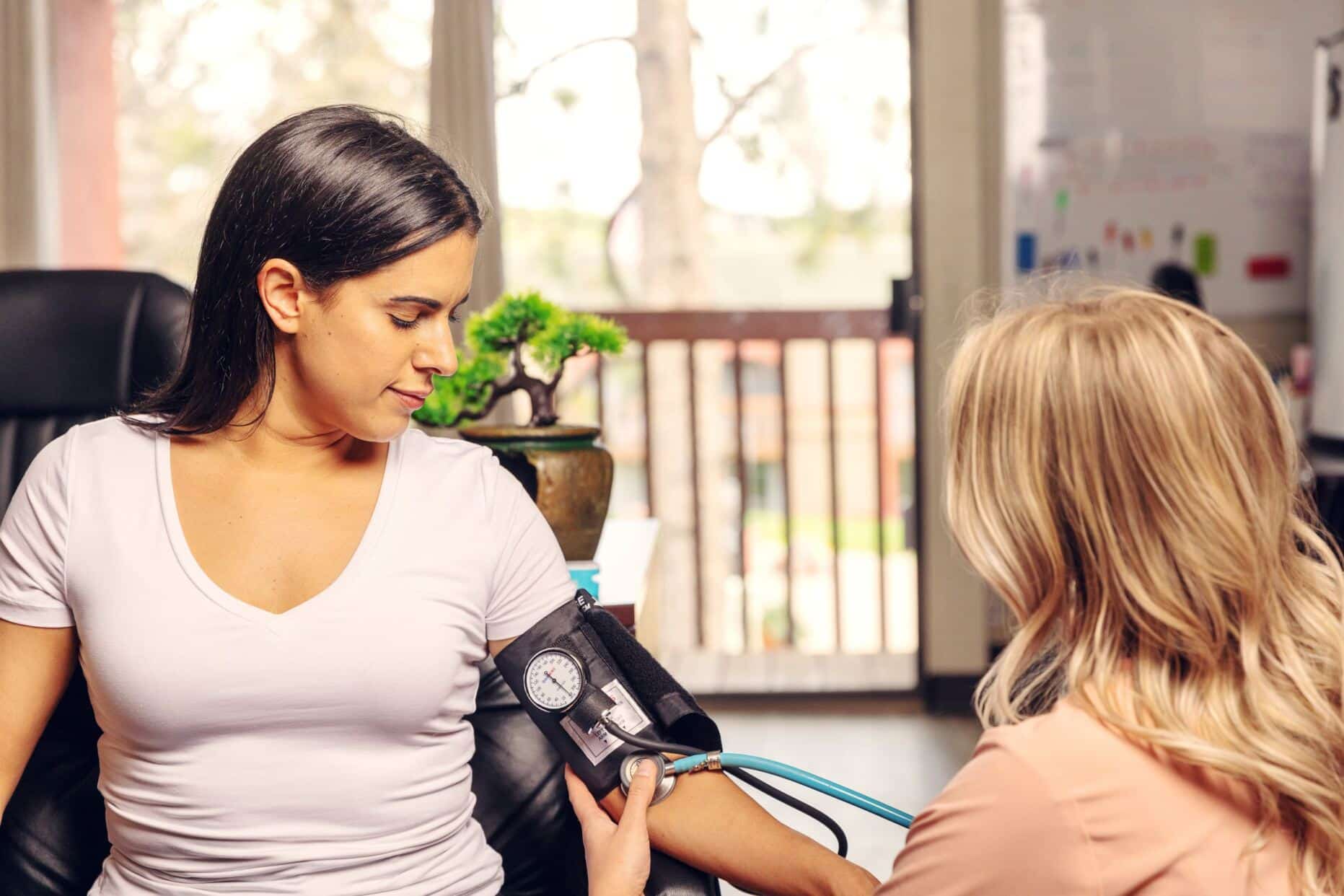There are common elements that help define and diagnose a substance use disorder, there are many variables to consider when devising a treatment plan. Culture, age, gender, religion, sexual orientation, and more can all shape a patient’s needs and attitudes about recovery. As a result, individualized rehab is often recommended to better address a patient’s unique situation.
Treating Substance Use Disorders
Even for a routine medical checkup for something like a lingering cold, a patient often has some idea of what to expect: Check-in. Getting a patient’s history or updating the chart. Evaluation. Possibly some tests. Suggestions for care. Whether it’s allergies or a cold, that can determine treatment. Then, maybe a prescription and orders to follow-up if things don’t improve in a week.
Treatment for SUDs tends to follow a basic pattern too, but specialists and facilities often tailor the treatment plan to the individual so their needs are addressed.
When a person checks into a rehabilitation facility they’ll be examined. That process includes taking the patient’s history as well as determining their current mental and physical health. From there, the elements of treatment frequently include:
- Detoxification. An early but important step is meant to get the patient free from drugs. Medication may be administered to make the process as safe and comfortable as possible.
- Inpatient rehabilitation. Here, the patient is under 24-hour medically supervised care. Other mental or physical issues may be addressed as well. Inpatient rehab can last for days or months and may include therapy, counseling, support groups, and more. Psychotherapy, especially cognitive behavioral therapy, can help people work through destructive or ineffective coping mechanisms. Other treatments may be incorporated as well, including holistic care or other alternative therapies.
- Aftercare. A major part of SUD treatment begins once the patient is readying to leave rehab. This is the time that they’ll work with facility staffers to craft an aftercare plan. The main goal is to develop strategies for preventing relapse. It can include transitional housing, outpatient treatment, regular check-ins with the facility or with another addiction specialist, self-help groups, and more.
Benefits of Individualized Treatment
Despite those common elements, there are countless other factors to consider when developing a plan of treatment.
Cultural and religious considerations, gender, identity, co-occurring disorders, family dynamics, and more, can shape a treatment plan.
Other considerations come into play too — sometimes simply amounting to personal preference — like whether a person chooses to recover in the setting of a mountain retreat or ocean side, or if they prefer art or equine therapy.
Considering culture-specific attitudes and values, whether a person comes from a certain ethnic group, is gender fluid, has a strong faith (or none at all), and other factors can shape and improve treatment outcomes. When people feel seen and heard they tend to be more engaged, thus lowering lower the risk of relapse.
Language, for example, can be a barrier in treatment, not just for mental health, but for medical issues as well. English is not the first language for an estimated 37 million U.S. adults. Out of that group — 18%, or 18 million — say they do not speak English very well. That can present a hurdle to communication, and affect treatment. Nearly half of surveyed non-English speakers who requested an interpreter when receiving healthcare say they never got one. Language and cultural barriers can also make the difference between a person choosing to get care or skipping it altogether. Don't see your Insurance Provider?
Learn More About Your Insurance Coverage
Every Story Is Unique
There are countless options a person may choose for their recovery. In turn, there are countless considerations a clinic or facility may offer as they build a treatment plan for their patients. A person’s mental health needs, as well as physical health, are two such things. Trauma, previous substance use, or early exposure to drinking or taking drugs are other things to note.
Culture, ethnicity, faith, age, and more can shape a person’s views and steer how they may respond to treatment.
Culture and cultural identity in particular collectively overshadow and encompass so much, some obvious, but others can be subtle. Culture is how a group views and interacts with the world. It’s a set of values, beliefs, and norms. It’s not neatly tied to religion, race, ethnicity, or sexual orientation. It can be a combination of these factors or something entirely else like language, being from a certain region, socioeconomic status, or other common ground.
Some aspects of culture may include:
- Race and ethnicity. Race is usually seen as biological, even though it’s difficult to identify race through biology. On one level it describes a group of people with some common physical traits and can link a group on a social level. Ethnicity is more about belonging to a group. Values, origins, and beliefs are shared and help define ethnicity, rather than similar physical traits.
- Family dynamics. Family can affect treatment considerations in many ways. Sometimes it can be extremely helpful to bring families into the recovery fold, especially considering how addiction can affect the entire unit. Informing families of the treatment process, and what to expect as their loved one recovers can prove helpful. Family can also provide more background into underlying causes and concerns.
- Socioeconomic status. Income and insurance coverage can affect one’s mental health, both as a child and as an adult. A reduced socioeconomic status can mean fewer opportunities, less income, less insurance, and more stress. It can make seeking recovery more challenging, too. Federal resources like the Substance Use Disorder and Mental Health Services Administration (SAMHSA) can help a person narrow their search to options within their budget. Some facilities have scholarship options to cut costs, too.
- Religious views. For some, faith is a key component of recovery. For others, not so much. Most facilities understand that and consider that as they treat their patients. Peer support groups like the 12-steps often have a spiritual component, helpful for the patient wishing to connect with a higher power. Science-structured options like SMART Recovery are options as well.
- Co-occurring disorders. Co-occurring disorders, also known as dual diagnosis, can play a role in recovery too. That’s when a person has both a SUD and a mental illness. A person may resort to drugs or alcohol as a result of a mental disorder, but they may also develop a SUD as a result of mental illness. In 2019 an estimated 9.5 million adults in the U.S. had co-occurring disorders. Typically both disorders are treated, sometimes with medication, therapy, or a combination of the two.
- LGBTQ. Lesbian, gay, bisexual, transgender, or questioning individuals face levels of discrimination and scorn that heterosexuals rarely do. They also are more in danger of experiencing violence and harassment. This can increase the likelihood of SUDs. Respectful and inclusive treatment can give a patient a chance to focus on recovery.
- Diverse generational identities. Depending on what age a person is, their SUD situation can vary widely. More than 1 million adults over the age of 65 have some form of SUD. Older individuals have their own health issues like heart problems or memory issues. Some drugs can make these conditions worse. Prescription drug abuse can be an issue, too. Someone younger may face their own challenges, including parenting or guardian issues, challenges in school, extracurricular activities, or work, bullying among peers, postpartum depression, and more.
Understanding the Benefits of Individualized Treatment
Millions call themselves Americans, but many hail from all corners of the globe. The United States continues to grow more diverse, with Latino, Hispanic, and Asians experiencing the greatest population growth.
How a person was raised, by whom, and where they grew up can affect how they interact with the world as well as how they react to treatment. Those things and more are worth considering as a recovery plan is devised.
Sources
Medical disclaimer:
Sunshine Behavioral Health strives to help people who are facing substance abuse, addiction, mental health disorders, or a combination of these conditions. It does this by providing compassionate care and evidence-based content that addresses health, treatment, and recovery.
Licensed medical professionals review material we publish on our site. The material is not a substitute for qualified medical diagnoses, treatment, or advice. It should not be used to replace the suggestions of your personal physician or other health care professionals.







